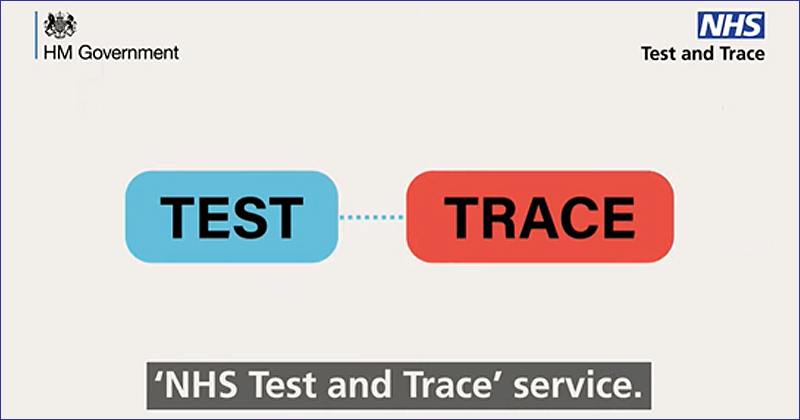what matters legally on returning to work during covid-19
Returning to work
The lockdown imposed in response to the coronavirus outbreak is now in the process of being lifted – albeit gradually. As part of this the Government are encouraging employees to come back to work. Some businesses that were legally required to close are now reopening and more will follow in the coming weeks. The Coronavirus Job Retention Scheme (CJRS) that has supported more than 8 million jobs since March will change in July so that employees who return to work part-time will still qualify for support. From August employers will have to start contributing to the cost of furloughed employees with the scheme being ended altogether at the end of October.
So this month we are looking at the things that employers need to think about from an employment law perspective when starting on the journey to normal working. Much of this is common sense, but there are potential legal difficulties that employers can avoid by listening carefully to the concerns of employees and adopting a flexible approach.
Working from home

Despite a limited easing of the lockdown, Government advice remains that employees should work at home where that is possible. Encouraging employees to continue to work from home not only protects those employees from the risk of infection, it also helps employers provide a safe workplace for those employees who have to come into work by reducing the number of people who will be on site at any one time.
Many employers will be used to dealing with requests from employees to work at home. Generally, the employer is free to refuse such requests if there are genuine business reasons for doing so. In the current crisis however, the question is whether home working is possible – not whether it is the just as productive or effective as employees coming in to work. The employer might prefer it if employees came in to work and have good reasons for that view. But if the work can be done at home, then it should be. An employee is obliged to obey reasonable instructions but if most of their work is done in front of a normal computer screen then it is difficult to see how an instruction to come into the office could be a reasonable one. This works both ways. An employee might prefer to come in to work rather than stay at home. The contract of employment may not have envisaged home-working and will most likely provide for a specific place of work. Given the current situation however – and where the nature of the work allows it - an instruction to work from home is likely to be a reasonable one.
Given the additional workplace precautions that are likely to be needed for the foreseeable future and the limit they will place on the number of people who can attend work, it may be a good idea to regularise home working arrangements that were initially improvised in response to the immediate crisis. As working from home becomes a more long-term prospect employers will need to consider the health and safety implications. Since home working is not usually a high-risk activity the steps taken need not be onerous, but some sort of work-station assessment will be necessary as well as consideration of fire safety. Employers will also want to consider the best way to manage performance and measure productivity as home working becomes a more established feature of the business. This may involve clearly communicating the employer’s expectations around working hours. Home working provides an opportunity for a more flexible approach and this can benefit both sides – especially if the employee has child-care issues. However the employer may want to insist on certain core hours always being worked or specify when the employee must be available to participate in meetings or be contacted by a manager.
Employees working from home are of course undertaking additional expenses as a result. They are using more electricity at home and using their own broadband capacity. There is no specific obligation on the employer to make any contribution towards these additional costs but under the current tax rules a payment of £6 per week can be paid to cover the additional expense of working from home.
Click here to ream what are the 4 Types Of Customers You Will Meet While Running Restaurants After COVID-19 Recovery
Returning furloughed staff part-time

The next stage of the Coronavirus Job Retention Scheme will begin on 1st July. Employers will be able to bring employees back to work on a part-time basis, with the Government continuing to subsidise their pay so that they continue to receive up to 80 per cent of their normal pay to a maximum of £2,500.
This option will only apply to employees who have already been furloughed under the original scheme. The last applications under that scheme will have to be made by 30 June – meaning that employees will have to have been placed on furlough by 10 June in order to qualify.
Full details of the new arrangements are yet to be set out by Government. It is clear however that the employer will need to pay in full for the proportion of a normal working week that an employee will be asked to perform. The CJRS grant will only be made in respect of that part of the week that the employee will not be working. The employer will need to provide details of the employee’s normal working week so that the appropriate amount of CJRS money can be calculated.
Employees who have been placed on furlough will have agreed that they will not perform any work for their employer. If the furloughed employee is being paid in full – that is – the employer is topping up the grant under the furlough scheme so that the employee suffers no loss in pay, then bringing the employee back on a part-time basis is straightforward.
But in many cases the parties will have agreed a lower rate of pay for the period of furlough in line with the funding available under the job retention scheme. so that the employee is only receiving 80% of their usual salary – capped at £2,500 a month – in line with the funding available under the scheme.
If the employer wants the employee to return to work on a part-time basis and continue to be paid less than his or her normal salary, then that will require a fresh contractual agreement. The employee should be asked to work on a part-time basis in return for a salary made up of the employer’s payment for work done together with the amount that will be funded by the CJRS. It will be important to stress that the arrangement is temporary and that normal working will resume either when the job retention scheme ends, or when the employer is ready to bring the employee back full-time.
If an employee is paid by the hour with no guaranteed minimum week, then there is no need for a separate agreement. The employer will be able to ask them to return to work a limited number of hours, in accordance with their contract. The employee will then gain the added benefit of an additional payment from the job retention scheme based on their pay in the previous tax year.
Making the workplace covid-secure
The employer has a duty to take all reasonable steps to provide employees with a safe place to work and a safe way of working. The coronavirus crisis is unique in that it has an impact on the safety of every workplace in the country and all employers will need to develop a specific response to it. In the first instance that means carrying out a risk assessment designed to identify the risks of transmission of Covid-19 and identify the steps that can be taken to reduce that risk. Employees must be fully informed of the results of this risk assessment and the employer must consult either the appropriate health and safety representatives – or the employees directly – over any new safety measures that are to be introduced.
Central to these will be handwashing and hygiene procedures. Enhanced cleaning regimes will be needed for busy areas with particular attention payed to surfaces that are touched regularly. Employees should be given clear instructions about frequent handwashing and provided with hand sanitiser around the workplace – not just in the toilets.
The maintenance of social distancing is the next key requirement. Wherever possible employers should ensue that employees remain at least 2m apart and avoid the use of shared workstations. Employers should introduce appropriate signage, including floor-tape to mark out 2m distances, to help employees judge the correct distance. Where appropriate, employers could also introduce a one-way system for employees walking around the workplace.
Where keeping people 2m apart at all times is not reasonably practicable then the employer must do everything it can to manage the risk of transmission. This may mean using barriers or screens to sperate people, staggering arrival and departure times, having employees work back-to-back rather than face-to face and reducing the number of people each employee has to interact with.
One area that the employer cannot control is the employee’s journey to work. Employees are being advised to avoid public transport wherever possible. Where public transport is available, it is likely to be at a considerably reduced capacity. Employers should consider what measures they can take to assist employees in making their journey as safe as possible. This might mean providing enhanced parking facilities or even making use of the government’s cycle to work scheme to help employees buy bicycles! Where employees have no alternative to public transport then employers should consider flexible start and finish times to allow employees to avoid congested periods.

The government is in the process of rolling out a new scheme designed to identify those who have been in contact with an infected person and having them self-isolate for 14 days. This means that healthy employees may be instructed to stay away from work for two weeks.
Absence as a result of this instruction will count as a period of incapacity for work for the purposes of Statutory Sick Pay. However there is nothing to stop them from continuing to work if that can be done from home. If the employee really does need to come to the workplace to work then the employer will simply have to treat the two weeks of isolation as a period of sickness absence. As well as SSP of £95.85 the employee will also be entitled to any contractual sick pay that is payable.
An employer’s absence management procedures are generally designed to encourage employees to attend work and penalise those who do not – or at least encourage them to improve their attendance. An employee who has been instructed to isolate as part of the test and trace regime however is not in a position to make a choice about whether he or she is able to attend work. Indeed it is very important that they do not come to work. A reasonable employer will therefore want to make allowances for any period of forced isolation when making an assessment of the employee’s overall attendance. Absence on these grounds should not be relied upon to trigger warnings or other measures such as exclusion from bonus schemes that may otherwise be provided for in the absence management procedure. Dismissing an employee who has been instructed to self-isolate under this system would almost certainly be held to be unfair.
Indeed it is possible that any action taken against an employee in these circumstances would trigger the health and safety rights discussed above. An employee who takes steps to protect others from danger is protected in the same way as an employee seeking to protect themselves. It is certainly arguable that an employee who stays away from work because they have been instructed to self-isolate under the Government’s test and trace scheme or because they believe that they may be infected with coronavirus could argue that their absence falls into this category.
Employees who refuse to return to work
One concern that many employers have is how to deal with employees who refuse to return to work when requested. Can this be treated as misconduct? Employers should tread carefully.
The first thing to be sure of is that everything possible has been done to make the workplace safe and that this has been communicated to employees. Employees should be encouraged to raise any remaining concerns that they have so that these can be addressed individually. If the employer has not carried out a risk assessment and taken the steps described above to make the workplace safe then asking employees to return to work is unlikely to be a reasonable instruction. Withholding pay in these circumstances may be a breach of contract and any dismissal is likely to be unfair.
If a furloughed employee is unwilling to return and has a legitimate concern, such as an underlying risk factor, then the employer should try to find a solution. Could the work be re-arranged so that additional social distancing measures should apply to that employee? Is it really impossible for the employee’s work to be done at home. The employer could even consider simply continuing the furlough period in the hope that the level of infection will fall sufficiently to allay the employee’s fears. Another alternative is to accept that the employee is incapable of work in the current conditions and place them on sick leave.
If the employer does not believe that the employee has genuine concerns about their safety then there may be no alternative but to treat their refusal to return to work as misconduct. This will mean not paying them for their period of absence and may result in them being dismissed. The key risk here is that the employee claims the protection of the health and safety rights set out in the Employment Rights Act 1996.
HEALTH AND SAFETY CLAIMS

Employees have a right to protect themselves in circumstances of danger that they reasonably consider to be serious and imminent. Dismissing an employee in these circumstances will be automatically unfair. There is no qualifying period and no cap on the amount of compensation that can be awarded. Employees who are subjected to a detriment on these grounds – such as disciplinary action – may also bring a claim.
Could an employee who refuses to return to work because of the risk of coronavirus claim the protection of these provisions?
While every case will depend on the individual circumstances, there are substantial obstacles than an employee would have to overcome. In the first place there must be actual danger. Coronavirus is of course a serious danger to public health, but does that really mean that each individual workplace is in ‘circumstances of danger’ even if there is no evidence that any of the employees are likely to be infected? Even if the Tribunal does accept that coming to work would have involved some danger, that is not enough to trigger these health and safety rights. The employee must also reasonably believe that any danger was ‘serious and imminent’. Importantly it is the employee’s belief that matters – provided it is reasonable – rather than any assessment of the danger carried out by the employer. A Tribunal might hold that an employee’s belief that the danger was serious and imminent was a reasonable one even if it concluded that it was misplaced.
Clearly a crucial question here is whether the employer has taken all reasonable steps to prevent the transmission of coronavirus in the workplace. If it has not, then that would give the Tribunal strong reasons for upholding the employee’s right to refuse to come back to work. But if it is clear that the employer has done all that could be expected – and the employee has no additional vulnerability that would exacerbate any risk to their health – then it is unlikely that that the Tribunal would find that there were circumstances of danger that the employee reasonably believed to be serious and imminent. These provisions were developed to deal with emergency situations that arise in the workplace. They do not give every employee a right to refuse to come to work because they are worried about a background risk of infection that would exist whenever they left home.
This is likely to be a hotly contested area in the aftermath of the coronavirus crisis and so a cautious approach is advisable. Employers should listen carefully to any concerns that employees raise about the prospect of returning to work and only take disciplinary action when they are satisfied that there are no proper grounds for those concerns.
Equality Issues
The risks of Covid-19 do not fall equally. Different age groups and those with various underlying conditions are more at risk from the disease. There is also some evidence that different ethnic groups may also be impacted differently. A requirement to return to work – especially when full social distancing in not practicable – therefore has the potential to amount to indirect discrimination, disability discrimination or to trigger the duty to make reasonable adjustments. The best way for an employer to protect itself from such claims is to be scrupulous in following government guidance on creating a covid-secure workplace but also to listen to any individual concerns that employees have and take additional measures when necessary.
There is a particular issue with the protected characteristic of pregnancy and maternity. The employer’s risk assessment must take into account the additional risks that coronavirus presents to pregnant employees. While pregnant women are classified as a vulnerable group in relation to coronavirus, pregnancy has never in itself been a ground for shielding or self-isolating. In most cases there should be nothing preventing a pregnant employee from working provided government guidance is being followed in relation to making the workplace covid-secure. In those rare cases where there is a risk to either to the employee or her unborn child that means that the employee cannot work, then that triggers an obligation either to find suitable alternative work or to suspend the employee on full pay. Pregnant employees should not be placed on sick leave if the workplace cannot be made sufficiently safe for them.
One of the practical difficulties that employees may face in being asked to return to work is that their children are still not being provided with a place in school. While there is no right to paid leave to look after a child, employers should try to work with employees in this situation in order to try to find a solution. This may involve a working from home arrangement or a change in duties or place of work that allows the employee to accommodate their childcare needs. While parental status is not in itself a protected characteristic, employers should be alert to the fact that women are more likely to placed in difficulties as a result of children not being able to attend school. A rigid and unsympathetic approach to the issue therefore creates a risk of indirect discrimination.
Read more on the government's Hospitality support, VAT reduced to 5% plus 50% customer discount
